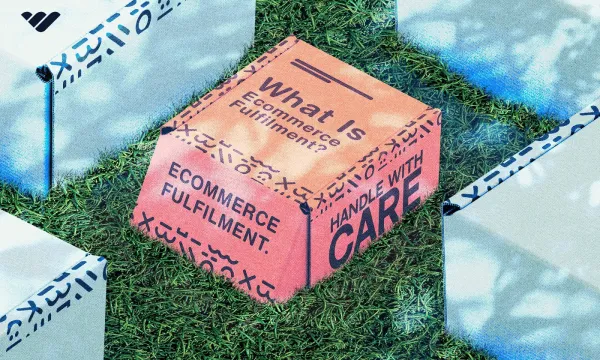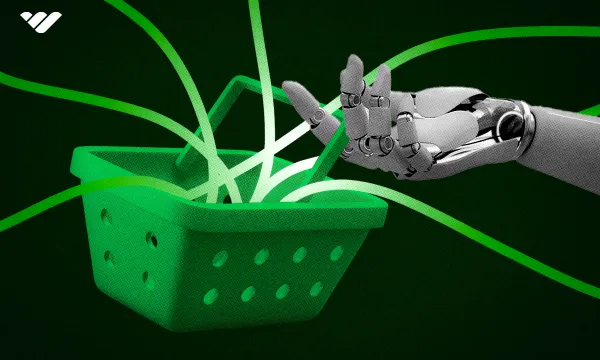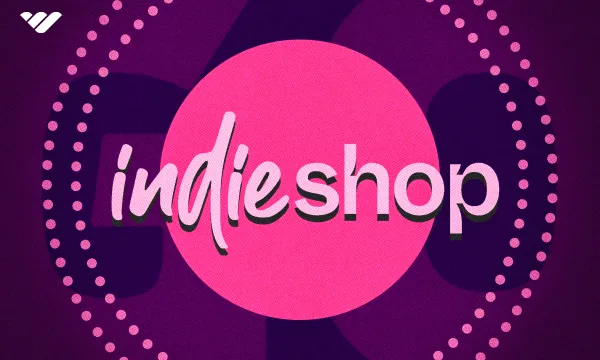There are a lot of factors to consider when running an ecommerce business. One of the most overlooked yet greatest elements in terms of conversion rate in ecommerce is shipping. Specifically, how quickly an order will arrive at a customer’s doorstep. This process between the customer placing the order and the seller getting it to the buyer is known as ecommerce fulfillment.
Think about some of the most successful ecommerce businesses, like Amazon. The reason Amazon Prime has such a strong retention rate and growth rate for its subscribers, even as its prices rise, is because of the fast shipping time that it offers thanks to its efficient ecommerce fulfillment. Amazon's ecommerce fulfillment has the ability to deliver orders on the same day that they are received.
So why is ecommerce fulfillment so important? Well, when done well, third-party ecommerce fulfillment will both increase your conversion rate and customer retention and thus your brand reputation. If done poorly, the opposite will happen: you can probably think of a personal example where you declared never to buy from a company or seller again simply because of poor fulfillment, which might have meant longer than quoted shipping times, poor packaging, or little to no updates regarding shipment status.
To understand more about what makes good ecommerce fulfllment, let’s go over the whole process, including the different types, how it works step by step, and how and when to use third parties to help you streamline your logistics so that you can improve your customer adoption and retention rates.
What is Ecommerce Fulfillment? Fulfillment Services in Ecommerce Explained
Depending on the state of your company and its operations, you will have to consider several factors when it comes to ecommerce fulfillment - including whether or not you have an existing warehouse or multiple warehouses, if you are shipping locally or internationally, how quickly you are promising to deliver your product, and how many different types of products you have.
If your goal is to operate an ecommerce store at scale, you will need to utilize a fulfillment service, as self-fulfillment will not suffice. This means that you will utilize a third party to assist in getting orders from wherever your product is stored to your customer’s doorsteps.
To get a full understanding of the whole process, you will need to assess your business to see how your company can make best use of an ecommerce fulfillment service. Let's take a closer look at how ecommerce fulfillment works.
How Does Ecommerce Fulfillment Work?
Ecommerce fulfilment is a series of steps carried out in a systematic and sequential manner. In the broadest sense, the process is what happens between a customer placing an order and when the product ends up at their doorstep. For digital product ecommerce, the process is straightforward as there is no need to sort out the inherent logistical issues that physical products have.
However, with physical products, a business owner needs to consider several factors, including:
- Where the product is coming from, and if it is coming from overseas, how customs might affect the schedule
- Storing the product, often in a warehouse or multiple warehouses depending on the customer's location
- The quantities of the product sold, including if there is a bulk or wholesale option for consumers
- Whether or not the product is seasonal or expires
- Picking and packaging, particularly if the product requires any special handling
- Getting the product out to a shipping provider once ready based on the customer-quoted shipping and handling time
Each of these factors will affect how the multiple steps of the ecommerce fulfillment process are carried out in the most efficient manner, and additionally, which provider is best for the company’s specific needs.
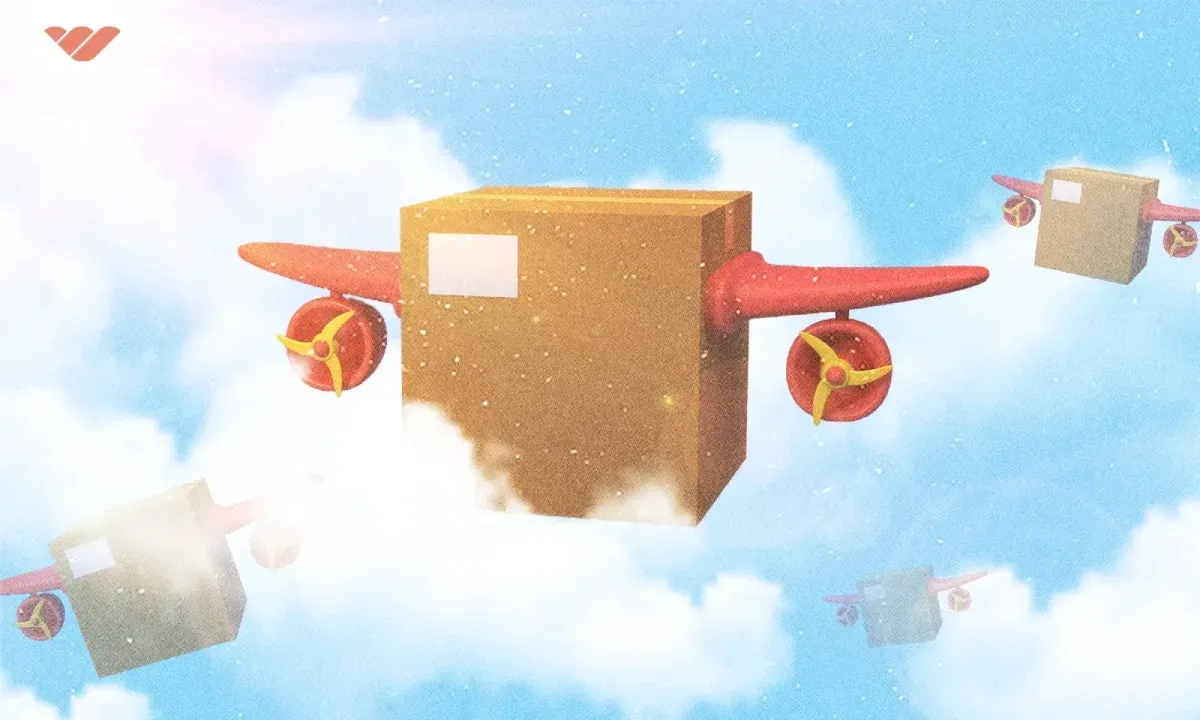
Ecommerce Fulfillment Methods
Now that we have looked at how you fulfill an ecommerce order, let's explore the different ways in which you can do this. Ecommerce fulfillment will fall into two main categories, self-fulfillment and fulfillment via third-party logistics, also known as 3PL. Again, the method you use depends on the needs of your business.
Self Fulfillment
Many businesses start by fulfilling their own product: think of a scrappy entrepreneur shipping homemade candles out of their garage, or a gluten-free bakery operating out of their kitchen and hand delivering to locals in their city.
However, every business that wants to scale beyond a small and mostly local customer base must use third-party fulfillment in order to do so.
Third Party (3PL)
Third party logistics, aka 3PL, handles the whole process of fulfilling orders so that the business owner can have more time to focus on scaling their business by outsourcing this intensive operation, which will include the receipt of goods, storing, shipping, and return management. They will charge fees based on volume, but will sometimes have minimums that must be met in order to be considered.
More specific types of third-party fulfillment include:
- Dropshipping
Dropshipping a method of fulfillment in which the orders are taken care of behind the scenes, often without the customer knowing. It allows the ecommerce store owner to delegate the shipping to a third-party store without an additional management fee. However, downsides include no return management, longer than average shipping times, and risk of customer dissatisfaction if the product has not been reviewed by the seller and is of low quality. - Print-on-demand
Similar to dropshipping but offering slightly more control to the seller, print-on-demand, which is often used by sellers of merchandise, allows a business owner to have designs printed on demand as they come, which eliminates the potential issue of ordering too much of one design and having unsold inventory taking up space as it sits for too long. However, just like dropshipping, there is often no return management or ability to seamlessly order products in bulk for a discount.
The Ecommerce Fulfillment Process Explained
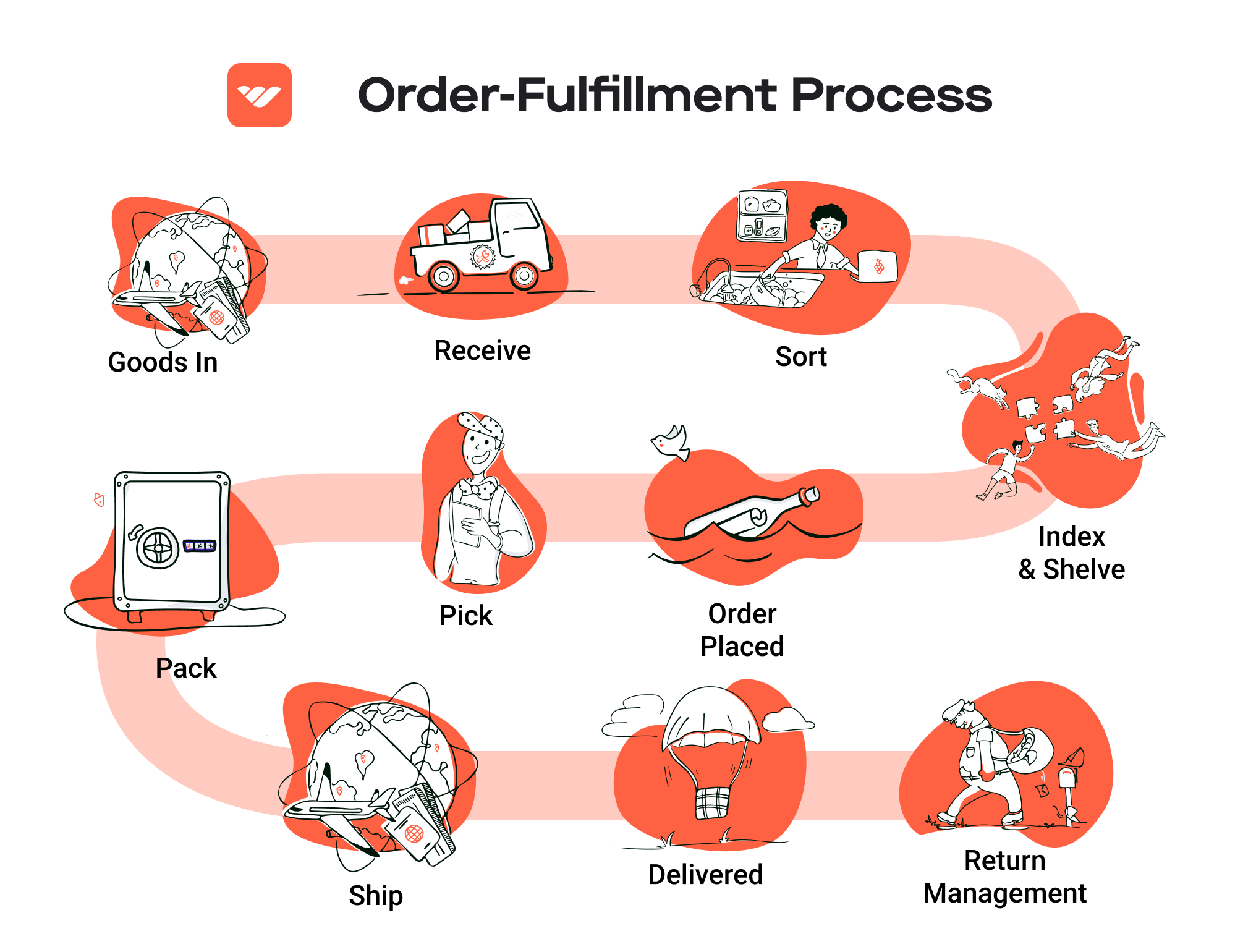
Although there are different methods of ecommerce fulfillment, they all employ similar methods. As such, while the specifics of each step will vary between businesses and ecommerce fulfillment services, the broad sequence of the process is as follows:
1: Receiving of Goods
Ecommerce fulfillment starts with the receipt of goods that will be sold. Sometimes the goods are manufactured overseas and need to go through the process of clearing customs which might take some extra time. Even if the goods are domestically made, there needs to be a schedule and process for the receipt of goods.
2: Sorting and Storing
Once the goods are received, they will first be sorted as many ecommerce fulfillment providers deal with several companies selling a variety of products. After they have been sorted, they will then be shelved in a warehouse in an organized manner so that they can be found quickly whenever an order is placed.
3: Order Receipt and Confirmation
Once a customer orders an item online, the provider will be notified so that they can prepare the product in a timely fashion.
4: Inventory Picking and Packaging
Now that the order has been confirmed, the product will be picked and packaged accordingly so that it is ready to be shipped from the warehouse.
5: Shipment
A shipping provider will take and batch orders according to their respective expected delivery dates.
6: Delivery
The customer will have received their order within the expected timeframe.
7: Return Management
The process doesn’t stop whenever an order is delivered–an ecommerce fulfillment provider must be prepared to accept returns as they come in accordance with a premade return policy. The return management process can start by having a premade return label for customers to use as needed.
Outsourcing to Third Parties Using Ecommerce Fulfillment Services
It is clear to see that there is a lot involved in the ecommerce fulfillment process, from the initial receiving of the goods all the way through to a robust returns process. That is why many people choose to engage the services of a third-party provider. Although these 3PL services come with several categories of fees - such as costs associated with order fulfillment, packing materials, return management, and storage space - the convenience of using a 3PL is marked by a number of benefits that often outweigh the cost. These benefits include:
- A Fully Comprehensive Fulfillment Solution
A 3PL offers an end-to-end solution that will handle all aspects of fulfillment from receiving, picking, packaging, shipping, and return management. - Operational Delegation
The fully comprehensive nature of an ecommerce fulfillment service allows a business owner to focus on other aspects related to growth, including marketing and other business development. - Efficient Scalability
Many 3PL companies are capable of high volume, so a business owner often doesn’t have to worry about their quantities being too high - even in their busiest days of hitting record numbers. - Cost Savings At Scale
Once the minimum volume for use is met, the fees will be proportional to the volume of the business, including incentives for high-volume sellers. This means that just about every ecommerce fulfillment provider will offer discounted fees past a certain threshold. - Logistical Problem Solving
Especially during peak times like the fourth quarter and Black Friday or Cyber Monday, order fulfillment can get quite tricky to coordinate. Ecommerce fulfillment services and shipping providers can easily become overwhelmed with the large volume of products to process. Thankfully, you won’t have to worry about any problem-solving as a good 3PL will handle this, often behind the scenes without you needing to know. - Integrations
In order to track orders efficiently, 3PLs utilize integrations via APIs and other endpoints that eliminate any need for excess communication or miscommunications and allow for the potential for automating parts of the process.
Let’s continue with some exact companies you can use to fulfill your ecommerce orders at scale, including features and pricing so you can choose the company that best suits your needs accordingly.

Choosing an Ecommerce Fulfillment Partner: The 5 Best Ecommerce Fulfillment Services
Among the vast array of 3PL companies, a few stand out. Here are some of the best.
Amazon FBA
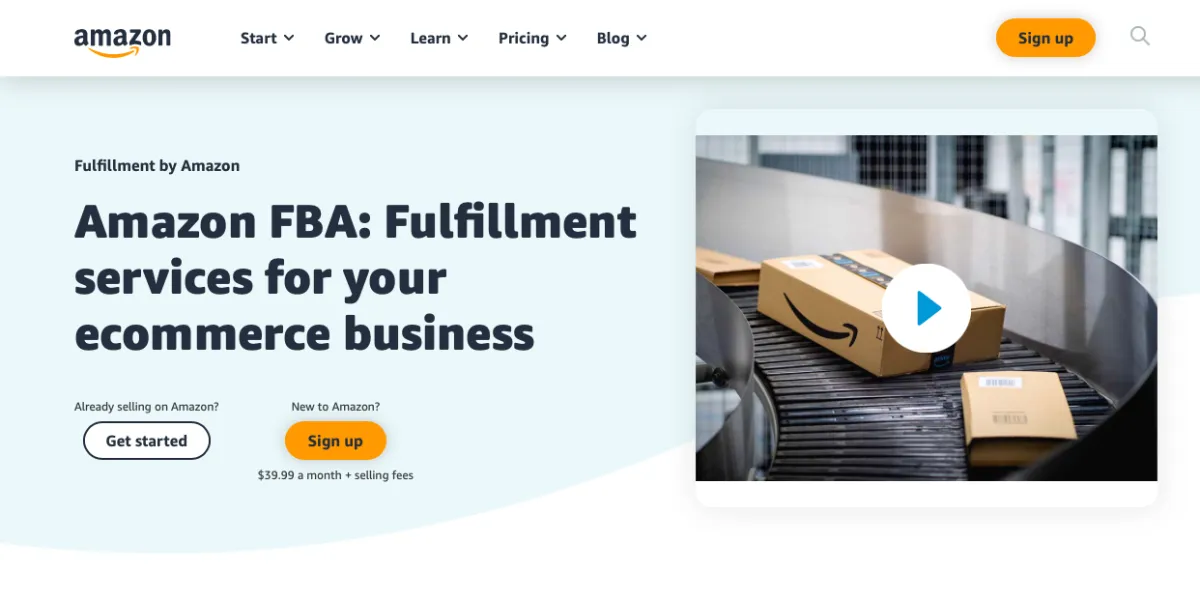
When it comes to third-party fulfillment for sellers of physical products, it is hard to beat Amazon FBA.
Amazon Prime is powered by FBA, and because it has such a high conversion rate amongst buyers who have an ever-shortening expected time frame for receiving products, its shipping times get faster and faster as the years go by.
First launched in 2006, the fulfillment service has now blossomed to power the fulfillment of 66% of the top 10,000 sellers as of 2022 thanks to its extensive features that make it both appealing and easy for sellers to use FBA as their chosen ecommerce fulfillment provider.
Features
- Fast fulfillment times
Amazon FBA is behind the magic of what makes Prime shipping times so fast. Rather than utilizing a third-party shipping provider, Amazon uses its own trucks and vans straight from its warehouse, giving them a huge advantage over other ecommerce fulfillment providers who have to utilize third-party shipment companies such as FedEx or UPS for the last leg of getting the product to the customer’s doorstep. - Efficient Packaging and Shipping
FBA makes it easy for both ends when it comes to the packaging and shipping. On the seller side, they are told exactly how to organize and send in the product with a prepaid label based on route efficiency, taking any guesswork out of when and where to send labels. On the buyer side, Amazon is well known for lightweight and easy-to-open packaging that makes receiving the product a pleasant experience. - Handling of Customer Service for Buyers
One large perk of using Amazon FBA is that once a customer has placed their order, it will handle the vast majority of customer service issues, unless it is related to a last-second question about the product after the order has been made. Being able to delegate this part of customer service, which will include prompt updates about the ETA of an order, makes for a great customer experience and saves the business owner time and staffing. - Access to the largest physical product online marketplace
If a ranking were to be made in terms of market share, Amazon is the undisputed king of online physical product sales, often surpassing $100 billion every quarter with a steady growth rate - especially in the FBA-powered Prime category that your product will fall into if you use Amazon FBA.
Pricing
Amazon FBA is notorious for having relatively high fees which eat into margins that might already be thin. It also has a complicated fee structure that is not easy to understand. However, the benefit of accessing the volume of the customer base makes FBA worth considering.
Amazon's fees are as follows:
- $39.99 per month for a professional account that is capable of using FBA
- A referral fee between 6% and 20% depending on product category, with a minimum fee of $0.30.
- Storage fees ranging from $0.48 to $2.40+ per cubic foot, depending on product size and seasonality
- Individual product fulfillment fees ranging from $2.70 to over $140 if a product is oversized
To summarize, a seller who is selling a product in a typical price range of $20-$100 and a normal weight of 8oz-5lb should expect to allocate anywhere from 30%-45% of their expected margin to Amazon FBA fees.
ShipBob
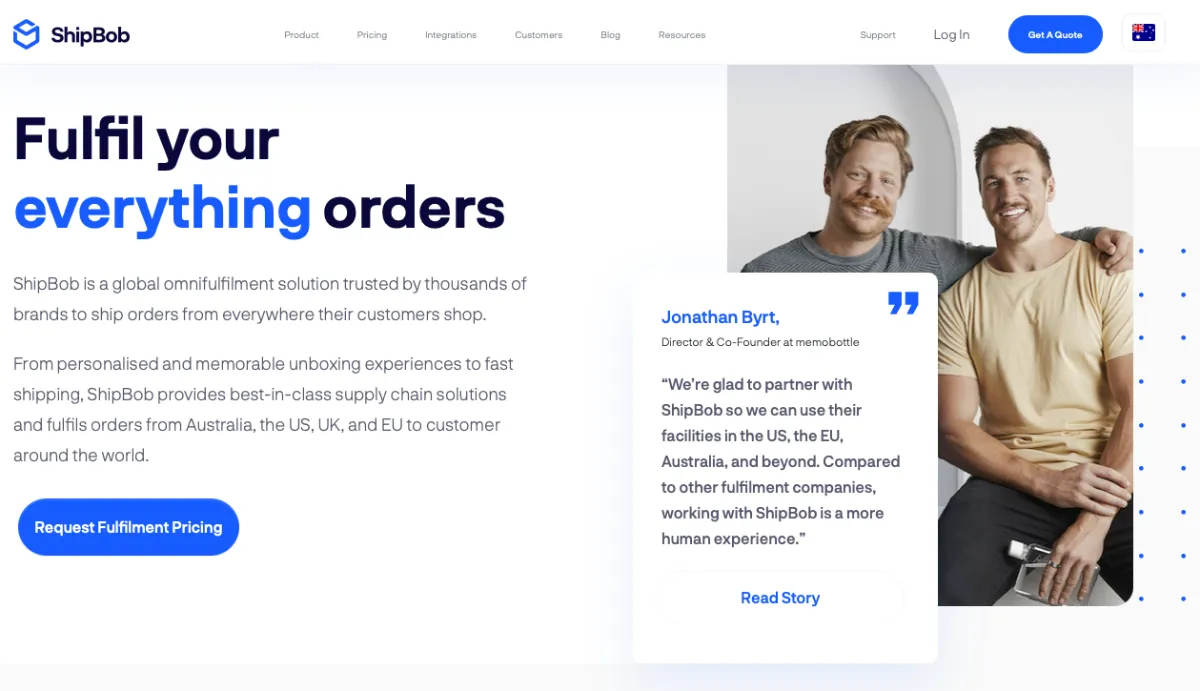
For ecommerce sellers who have scaled their local shop to a volume with margins that are at or quickly approaching a livable income, ShipBob is a top candidate.
ShipBob is claiming to change the way old-school fulfillment services operate with its proprietary software which connects easily with an existing online store, providing real-time advanced analytics.
It mostly services a US-based audience, particularly in Chicago where it was founded, and also New York and Los Angeles, where they offer the potential for same-day shipping.
Features
- Custom Packaging
With ShipBob, users can choose their own packaging materials including unique designs so long as they fit the guidelines. - Batch Fulfillment
Orders to ShipBob are able to be processed in batches. Its batch picking allows for fulfilling identical orders which makes for faster fulfillment times overall. - Ecommerce Platform Integrations
ShipBob integrates with many popular ecommerce selling platforms, including Woocommerce, Shopify, eBay, Amazon, Bigcommerce, Wix and more, all of which connect to display real-time reports on Shipbob’s dashboard. - Inventory and Returns Management
ShipBob’s inventory management software allows you to view reports including inventory levels and track orders. Additionally, you are able to view and manage returns quickly within the dashboard.
Pricing
ShipBob’s Standard B2C Pricing includes storage, receiving, and B2C order fulfillment.
ShipBob fee summary:
- Storage fees ranging from $5 to $40, starting at a 21 x 7 x 11 in bin with a maximum storage unit increment at a 48 x 40 x 54 inch pallet
- Receiving fees start at $35 per hour for the first two hours and $40 per hour afterwards
- Picking fees are free for the first 4 orders, and afterwards the fee per unit is around $0.25
- Software is free to use for customers of all levels
- Custom packaging can be used but must be purchased by the customer and fit ShipBob’s standards
- Fees can change based on volume
ShipNetwork
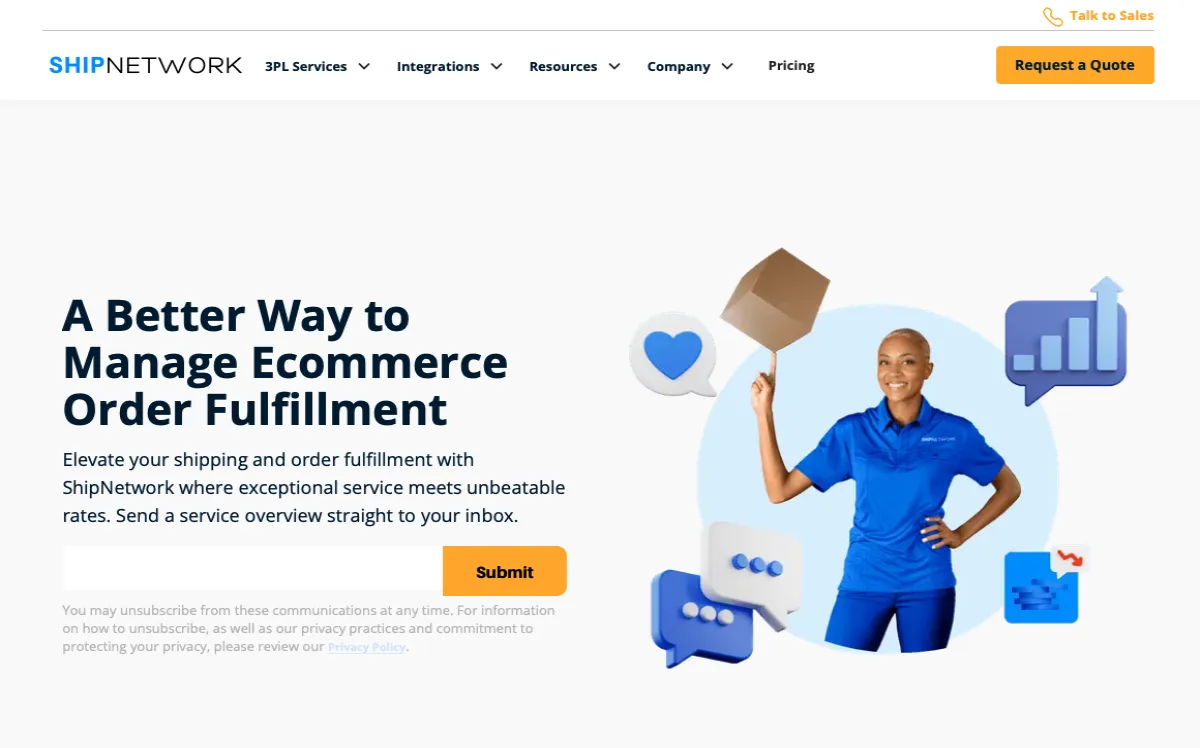
One of the original ecommerce shipping and fulfillment partners, ShipNetwork, formerly known as Rakuten Super Logistics, was founded in 2001 and has continued to evolve in order to gain customers in modern times while retaining long-standing clients.
In its 20+ years of existence, it has established a strong relationship with a solid network of shipping and warehousing partners. Its shipping network powers its Xparcel service, which includes multiple carriers like FedEx and USPS.
ShipNetwork has integrations with most major ecommerce platforms, and they offer a 100% order accuracy guarantee. However, it is only available to sellers within the United States.
Features
- Extensive 2-Day Delivery Network with XParcel
ShipNetwork’s XParcel allows you to get the best rates and choose from FedEx, UPS, USPS, and DHL, in addition to select local shipping providers. - Ability to handle full truckload (FTL) and less-than-truckload (LTL) shipping
If you are moving products in bulk, you can save by sending products by the truckload. ShipNetwork can handle both full truckload and less than truckload, the latter of which should be considered if a shipment is over 150 lbs. - Lot tracking and temperature control
For those that are selling perishables, creating and tracking lots by expiration date in addition to temperature control is extremely important. ShipNetwork can handle this for its clients, giving them one less thing to worry about finding a solution for. - Ecommerce Platform Integrations
Integrations with ecommerce platforms include Shopify, Woocommerce, Volusion, Magento, CartRover, and eBay.
Pricing
ShipNetwork offers custom tiered pricing based on volume and product type. Fees include receiving, storing, picking and packing. However, pricing is not transparent and one must contact ShipNetwork directly for an exact quote.
Red Stag
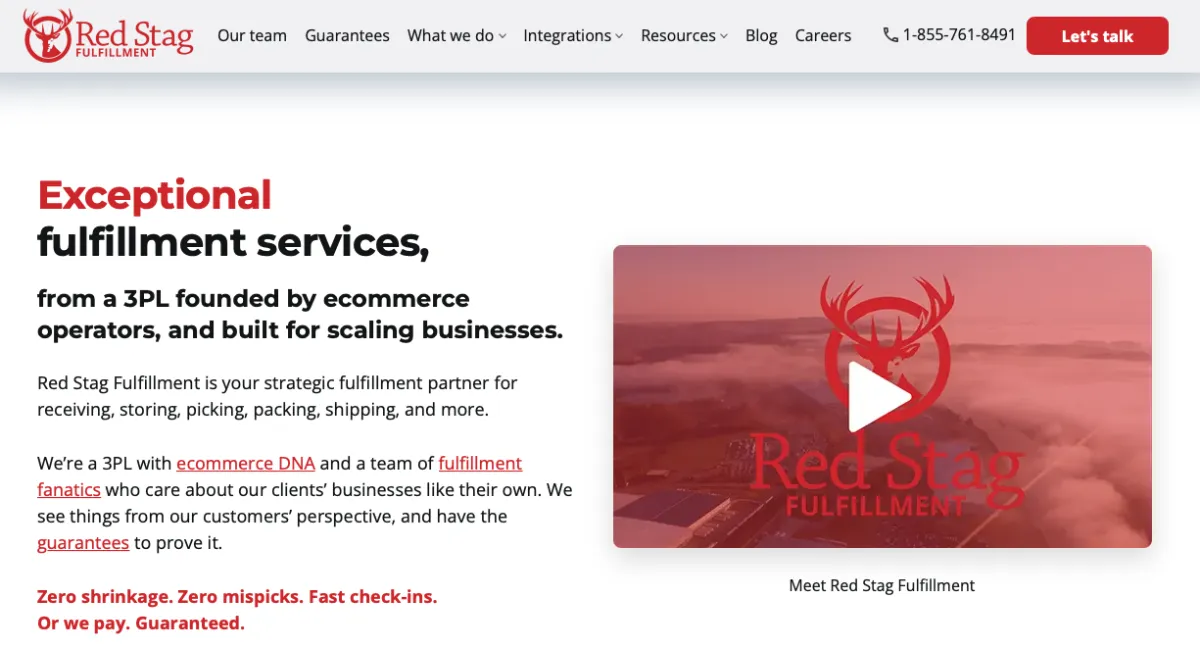
US-based ecommerce fulfillment service Red Stag might best be known for its service guarantees which offer not only a refund of associated fees but compensation of $50 per mistake.
The company touts high accuracy thanks to its video-monitored packing infrastructure which helps reduce mistakes to just 1 in 150,000 packages, which also helps to protect the business owner from false customer claims of erroneous orders.
A minimum order requirement of 200 orders per month must be met in order to use Red Stag.
Features
- No SKU or account management fees
Unlike some other ecommerce fulfillment providers, Red Stag stands out by waiving SKU and account management fees - Broad 100% Guarantee
Red Stag offers a 100% guarantee for receiving, inventory accuracy, order speed, and order accuracy. Any order that does not meet the guarantee is met with both a fee refund and a $50 compensation. - Advanced Reporting
Red Stag’s software offers advanced reporting including two-way inventory management so you can see both inbound and outbound inventory. Additional metrics in their reporting will allow you to make important data-driven decisions. - Ecommerce Platform Integrations
Integration to Red Stag’s inventory management software is available for multiple platforms including WooCommerce, Dropstream, and Shopify.
Pricing
The pricing structure for Red Stag includes the following:
- $100 Set-Up Fee
- $13.25 per Pallet Receiving Fee
- $2 per bin, $15 per pallet receiving fee
- $0.30 per order picking fee
- Additional fee for subscription boxes
Phase V Fulfillment
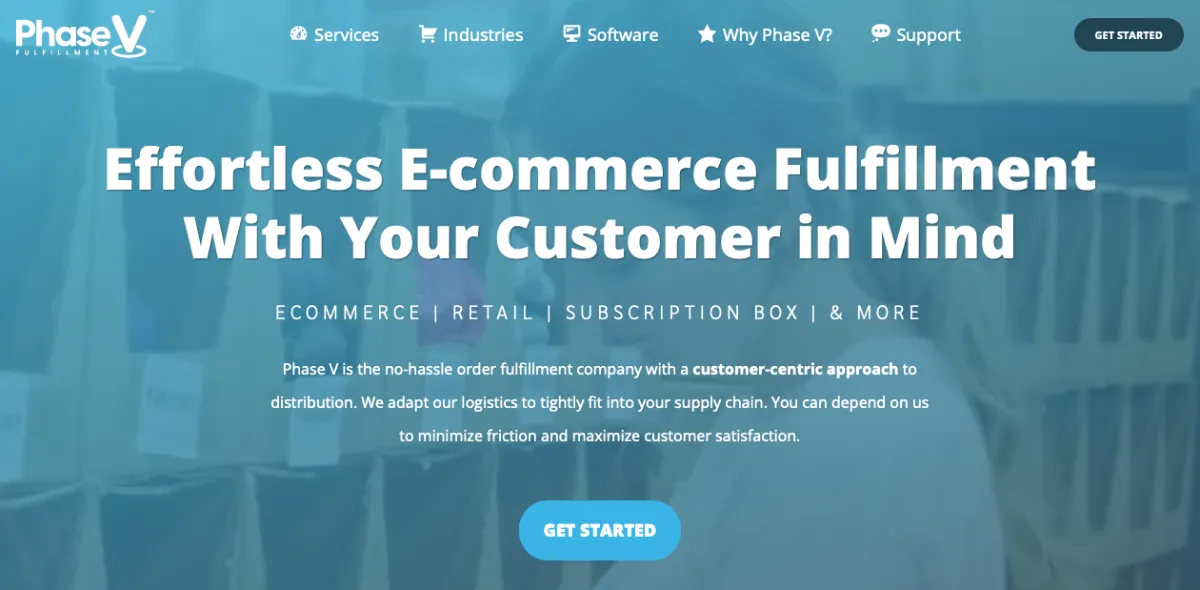
Although Phase V is centralized to one warehouse location in Ft. Myers, Florida, the 70,000 square feet of space is incredibly efficient and allows for greater control and faster fulfillment. For customers that need storage on the West Coast for faster fulfillment time, they have a partner warehouse in Arizona that can be used.
They cater particularly toward health and supplement sellers, which make up a good percentage of its customer base.
Phase V mostly fulfills domestic to the US where it stores products, but can help manage any international distribution channels as well.
Features
- Lot and climate-controlled storage available
Phase V is known to specialize in serving customers who sell goods such as supplements and other consumables that have expiration dates and an ideal storage temperature range. - Amazon FBA Preparation
Sellers who are doing high volume on Amazon and are receiving bulk products overseas that don’t want to need to see or prepare their products can utilize Phase V to prep and hand over products to an FBA warehouse for streamlined operations. - Inventory and Returns Management
In addition to having an easy-to-use dashboard that shows inventory levels, Phase V utilizes automated artificial intelligence that allows you to always know when you are running low on products and take the correct action accordingly. - Ecommerce Integrations
Integration via API with Phase V is possible with Woocommerce, Shopify, Magento, and Volusion.
Pricing
Phase V offers competitive pricing, including a waived setup fee:
- No setup fee
- $25 receiving fee
- Monthly storage and picking/packing fees (contact the company for details)
- Discounts for picking at 201 picks per month
Fulfilling Orders in Digital Product Ecommerce with Whop
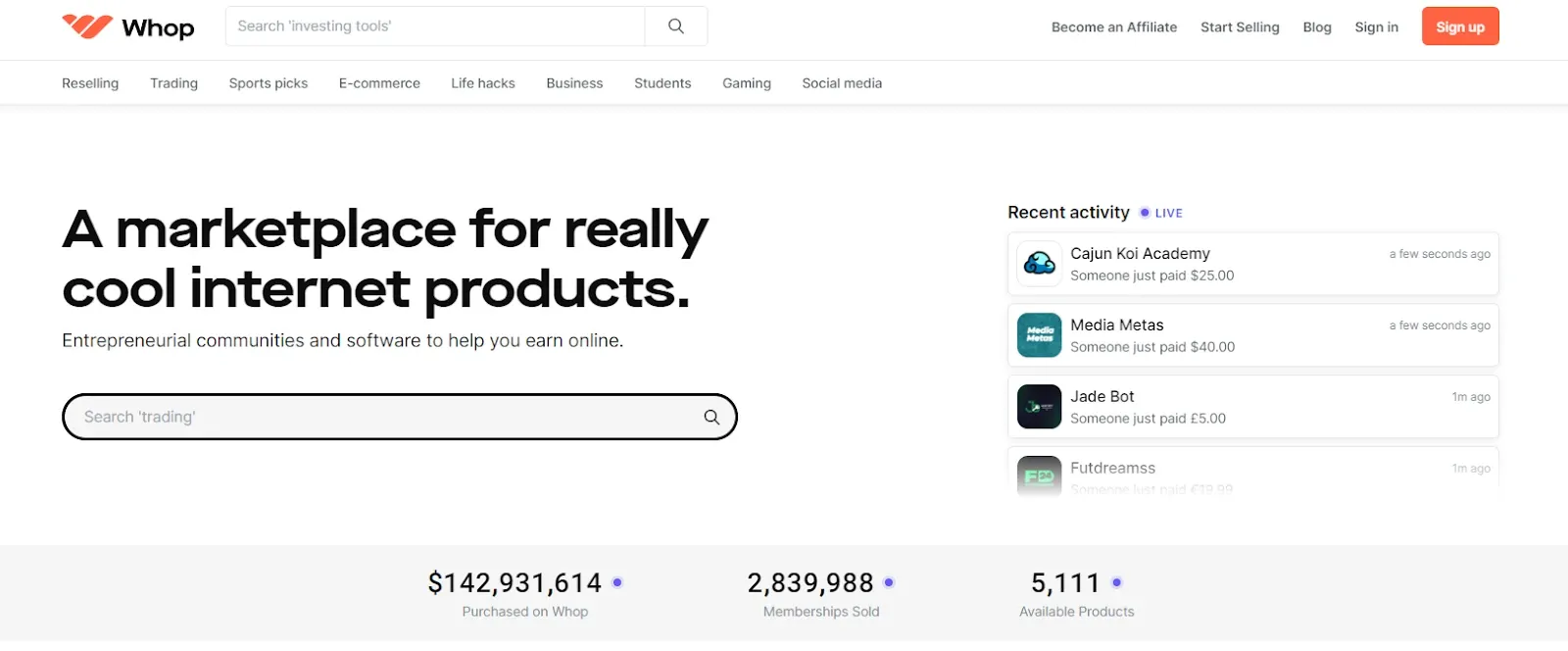
While physical products are a long-standing category in ecommerce, many modern entrepreneurs have recognized the advantages that digital products have, including higher profit margins and no need for traditional inventory management.
However, just as there is a process for physical product fulfillment, the process for digital product fulfillment is just as important. While many try to go it alone by managing their online storefront, checkout, payments, order processing, and the delivery of the digital product, they find that as the business grows they need to find a fulfillment partner to meet demands. The more digital products they sell, the more payments, delivery, customer interactions and potential refunds they have to manage. And, as you know by now, order fulfillment is a crucial aspect of any ecommerce business.
That is where Whop comes in. Whop makes it incredibly easy to fulfill ecommerce orders for digital products, with features including:
- Access to the top marketplace for all digital products
- Ability to accept multiple payment methods
- Seamless and secure delivery of product
- Clean and standardized checkout page
- Powerful and rich dashboard
- Easy to integrate, robust API
- Dispute fighter tool to manage any customer disputes and chargebacks
These are just some of the reasons that many sellers are having life-changing success selling digital products to satisfied customers with Whop.
Boosting Your Business with an Ecommerce Fulfillment Partner
If you're ready to move forward and find an ecommerce fulfillment partner, then take some time to review what that partner can do for you and how this can impact your business. For example, consider how important inventory management is for your business - if you are selling a PDF downloadable this probably is not relevant for your business, whereas if you sell small-batch clothing goods, having an overview of your current stock at all times is crucial. Additionally, consider how the ecommerce fulfillment partner can automate your business processes, cut costs, and integrate with your ecommerce platform.
👉 If you have a digital product that you are looking to sell, then sign up with Whop today. It takes less than 10 minutes to get started, and Whop takes care of your fulfillment processes so that you can focus on growing your business.
Ecommerce Fulfillment FAQs
What is the Difference Between Third-Party and Self-Fulfillment?
Self-fulfillment is when an ecommerce store owner finds, packages, and ships out each customer order themselves or using a team member. Third-party fulfillment in ecommerce is when an owner chooses an outside company, known as a 3PL, to fulfill ecommerce duties with a comprehensive solution that generally includes software, a warehouse, a team, and favorable shipping costs.
Which Ecommerce Fulfillment Service is Right for Me?
The ideal ecommerce fulfillment service or 3PL will vary based on the volume of your business, the type of product you are selling, and the location of your customers. You should assess the features of each providers and conduct a cost/benefit analysis before settling with one. However, if you are growing quickly and are losing time and money fulfilling orders yourself, you will very likely benefit from using a third party fulfillment service of any kind.
When Should I Not Use Ecommerce Fullfillment Services?
Ecommerce fulfillment services should only be used by businesses who are doing a high enough volume to justify the cost, so if you are just starting out or are not consistently selling product, you should wait before using one. If you make unique items that take time such as intricate artwork, you might never need to use an ecommerce fulfillment service as you can just take your product to a shipping provider to fulfill orders as they come.
How Much Does a 3PL Cost?
The cost of a 3PL will vary wildly, and often you will have to schedule a consultation and onboarding call with your prospective company to get an exact quote. However, generally speaking, a 3PL will include fees associated with account setup, receiving, storing, packaging, account management and returns.
What is the difference between 3PL and 4PL?
While a 3PL is a fully comprehensive product fulfillment solution, including warehousing, order fulfillment, inventory management and shipment services, a 4PL goes beyond by managing all aspects of the supply chain, including non-physical factors such as IT.
Is there a difference between logistics and supply chain management?
Logistics and supply chain management, while similar, refer to two different processes. Logistics refers to all aspects of order fulfilment, including warehousing, receiving, picking, packing, shipping and handling. Supply chain management is more complex, covering the complete process of making a product from the beginning, including the sourcing of the raw materials used to create the product.
